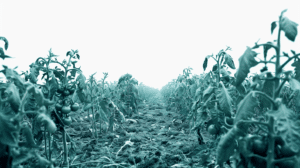What food companies should know about CSRD
and ESRS requirements ?
Sustainability reporting regulation is undergoing a worldwide transformation, maturing from voluntary reports and multiple reporting guidelines to mandatory, standardized reporting. At the forefront of this shift stands the European Union, with the Corporate Sustainability Reporting Directive (CSRD) requirements and the companying European Sustainability Reporting Standards (ESRS). The new regulation is expected to impact 50,000 companies, among them many multinational food and beverage companies
What is the CSRD?
The CSRD is a new mandatory sustainability reporting framework aimed to provide investors and stakeholders with a comparable, harmonized, and comprehensive dataset on which to evaluate companies’ sustainability performance and climate risks. Under the CSRD requirements, companies must report on their material ןmpact and risks throughout their value chain, in a standardized digital format, as part of their annual reports.
The directive, which will gradually come into force in the coming years, will impact not only EU-based companies but also non-EU companies with EU-based subsidiaries and multinational companies with a turnover of over 150 million euros in the EU. In addition to setting detailed and standardized reporting requirements, The CSRD introduces some new fundamental principles to ESG reporting:
1.The double materiality principle
Companies need to consider the two-way connection between their activities and the environment. That means companies must report not only on their impact and social and environmental factors but also on the ways the environment stands to impact their operations – including climate risks and disruptions.
2. Long-term thinking
Companies must set long term KPIs and annually report on their progress, entailing the integration of these goals into the companies’ long-term strategies.
3. Value chain accountability
Companies must incorporate material impacts, risks and opportunities across their value chain into their own reporting and are expected to leverage their financial influence to encourage reporting and implement positive change.
4. External validation and digitalization
Companies are required to report their material impact metrics in a digital XHTML format that will then be externally audited and uploaded to a unified database, allowing investors and stakeholders to easily compare and evaluate companies. The CSRD also highly recommends companies to find external partners and assign them specific roles in the data aggregation and certification process.
The CSRD requirements refers to 2 important sets of guidelines: the EU taxonomy, and the European Sustainability Reporting Standards (ESRS).
The EU taxonomy is a classification system for sustainable economic activities, encompassing 6 environmental objectives: Climate change mitigation and adaptation, water and marine resources, circular economy, biodiversity, and pollution prevention and control. An activity is considered sustainable If it significantly contributes to one of these goals, does not harm the other five, and complies with social safeguards.
The ESRS is a set of reporting requirements created in line with the EU taxonomy and multiple other voluntary reporting frameworks, such as the IFRS, GRI, and TCFD, in a stated effort to standardize and harmonize reporting. The ESRS requirements include 12 standards, encompassing the EU taxonomies environmental topics, as well as social, governance and cross-sectional standards, outlining both the issues to be included in the reporting and the manner in which they are to be reported
What CSRD requirements apply for F&Bs?
The new regulation will likely require some preliminary preparation by food and beverage companies, who will need to demonstrate their efforts to collect data and promote sustainability across their supply chain. However, regulators are well aware that some value chains are more complex than others and have
therefore detailed certain “discounts” corporations can expect in their reporting. These discounts, however, come with significant strings attached. When exact measurements are not available, a company can refer to industry averages or proxies, putting companies that have already invested in sustainability initiatives at a disadvantage. Considering the weight of agricultural production in many food companies’ scope 3 emissions (and general resource use distribution), even small changes between actual measurements and industry averages may have a significant overall impact on the company’s assessment. Furthermore, in order to revert to industry averages, a company must demonstrate it had invested “reasonable efforts” in obtaining information directly from its value chain, including leveraging its influence within the value chain and reaching out to external solutions, if necessary.
ESRS Standards
While all the ESRS standards are relevant to any company’s CSRD reporting, companies whose value chains include agricultural production, e.g., food and beverage companies, need to pay special attention to 7 key standards: climate change, pollution, water resources, biodiversity & ecosystem, value chain workers’ wellbeing, and affected communities.
For an in-depth view of the CSRD requirements and ESRS standards and value chain reporting and due diligence requirements, check out our new eBook
CSRD and the Food industry
Next Steps
The CSRD requirements and ESRS standards are a part of a global wave of sustainability regulation reform, creation of stricter, more standardized and mandatory reporting requirements. Although
many of the affected companies will only need to start reporting from anytime between FY2024 or FY2028, leading consulting firms recommend companies to start preparing for this regulation as soon as possible, and advise the following steps:
Companies are advised to outline their upstream and downstream value chain
2. Identify problem-prone links in the value chain
Based on their internal assessments, companies need to detect and focus on the parts of the value chain that may prove troublesome in the future
3. Involve corporate leadership
To integrate sustainability considerations into the long-term strategy of the company and assign directors to set up and oversee the implementation of due-diligence processes.
4. Digitize corporate ESG
Establish a rich and detailed ESG database that can passively capture information flowing from the value chain.
5. Identify technologies and partners
The directive urges companies to assign specified roles both within the organization and outside it. These include, of course, external auditors, but also technologies and tools that can help accurately capture sustainability metrics across the value chain and facilitate improvement initiatives.
Achieving CSRD compliance through technology
Agricultural production poses a particular challenge to corporate sustainability. Deciphering the material impacts of a value chain that includes agricultural production requires two critical components – reliable, engaged reporting to aggregate data, and agronomic intelligence to interpret it.
Agritask is an agronomic intelligence and analytics platform providing F&Bs with timely visibility and insights into their agricultural supply array. Agritask is used to support, monitor, and document sustainability initiatives among smallholder farmers and across geographies and crop types (from jungle-based coffee plantations to rice paddies to expansive plains of grain). We captures the material impact of agriculture production and documents the use of water, chemical inputs, machinery, and more, and leverages its reach to accelerate certification processes to ensure responsible sourcing.
“The market for sustainability information is rapidly growing, and the role of data providers is gaining in importance with the new obligations that investors and asset managers need to fulfill” – The European Commission, amendment 5 to the CSRD
To find our more about CSRD requirements, download the eBook








